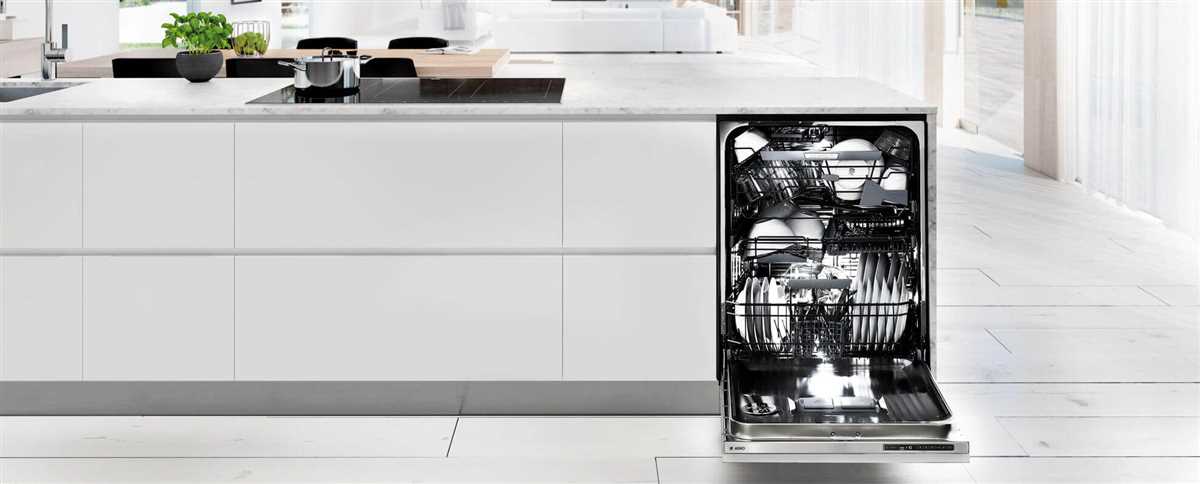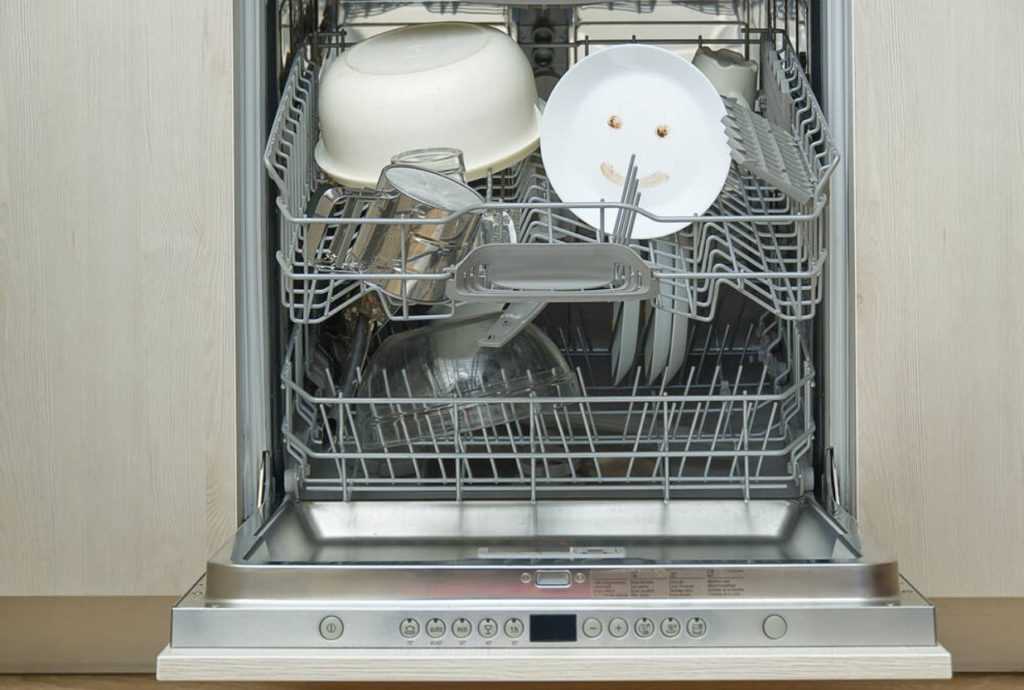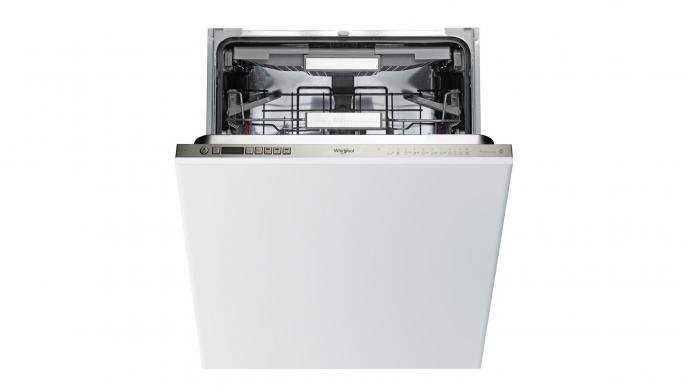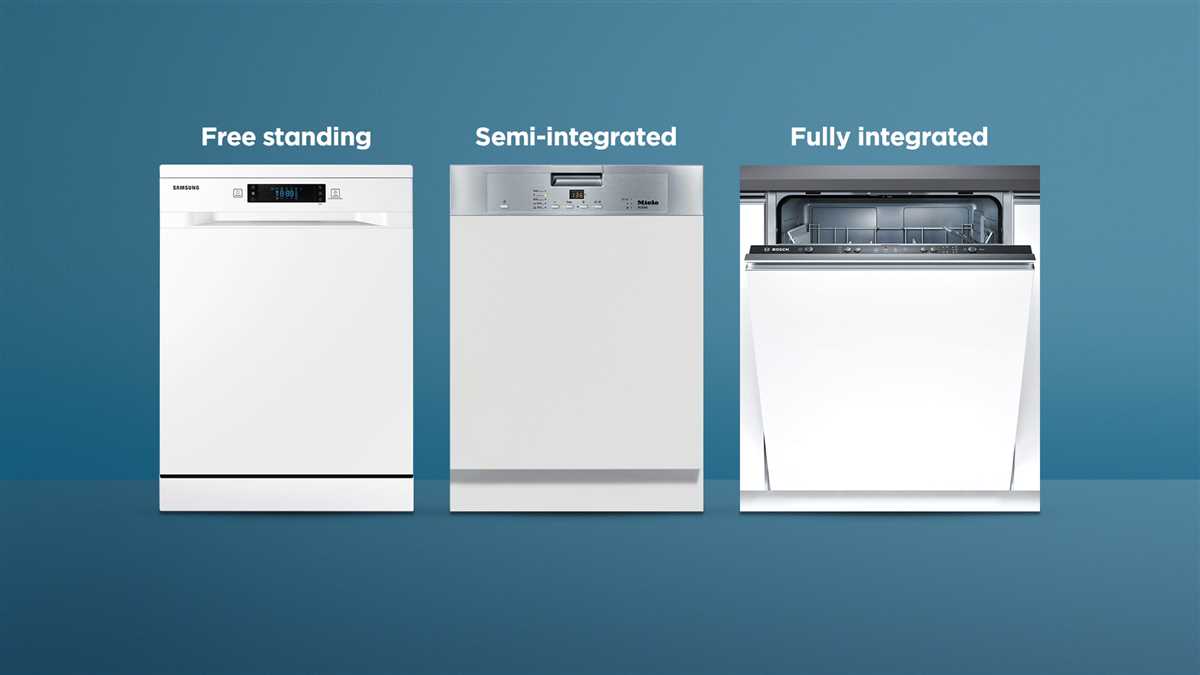




When it comes to choosing a dishwasher, there are several options to consider, including freestanding, integrated, and semi-integrated dishwashers. Each type has its own advantages and features, so it’s important to understand the differences before making a purchase.
A freestanding dishwasher is a standalone unit that can be placed anywhere in the kitchen. It’s designed to be visible and often comes in a range of colours to match your kitchen decor. With easy access to all sides, a freestanding dishwasher is relatively simple to install and can be moved if you decide to rearrange your kitchen.
On the other hand, an integrated dishwasher is built into your kitchen cabinets, with a front panel that matches the rest of your cabinetry. This design gives your kitchen a sleek and minimalist look, as the dishwasher is seamlessly integrated into the overall design. However, it’s important to carefully measure your space before purchasing an integrated dishwasher, as the unit needs to fit perfectly.
Semi-integrated dishwashers offer a compromise between freestanding and fully-integrated units. They have a front panel that matches your kitchen cabinets, but the control panel is exposed, making it easy to access the controls without opening the door. This approach gives you the best of both worlds, combining the sleek design of an integrated dishwasher with the convenience of having the controls easily accessible.
When looking at the features of each type of dishwasher, there are a few key things to consider. Freestanding dishwashers often have multiple baskets and racks, allowing for more flexibility in arranging your dishes. Integrated and semi-integrated dishwashers typically have a single basket, which means you may need to adjust the position of your dishes to fit everything in.
In terms of cleaning performance, there is no discernible difference between freestanding, integrated, and semi-integrated dishwashers. They all do a good job of keeping your dishes clean and sparkling. However, some higher-end models may offer additional features such as multiple wash cycles or smart controls.
Another factor to consider is water and energy efficiency. Freestanding dishwashers often have a larger capacity, which means they use more water and energy per cycle. Integrated and semi-integrated dishwashers, on the other hand, are designed to be more water and energy efficient, helping you save on utility bills in the long run.
In conclusion, when choosing a dishwasher, it’s important to consider the design, size, and features that best suit your needs. If you’re looking for a dishwasher that matches your kitchen decor and offers a range of options, a freestanding dishwasher may be the right choice for you. If you prefer a sleek and minimalist design, a fully-integrated dishwasher would be a great option. And if you want a combination of both, a semi-integrated dishwasher won’t disappoint. Ultimately, the best dishwasher for you will depend on your personal preferences and the layout of your kitchen.
The Various Types of Dishwashers for Your Kitchen
When it comes to choosing a dishwasher for your kitchen, there are several options available that offer different features and benefits. Understanding the differences between these types can help you make an informed decision about which one is best for your needs.
Freestanding Dishwashers
A freestanding dishwasher is a standalone unit that can be placed anywhere in your kitchen where there is access to a water supply and drainage. This makes it easy to move or replace if needed. These dishwashers usually have controls on the front door and come in a variety of designs and sizes. They offer good capacity and are a popular choice for many homes.
- Pros:
- Easy to install and replace
- Flexible placement options
- Wide range of designs and sizes
- Cons:
- Controls may be harder to reach if the dishwasher is installed under a countertop
Integrated Dishwashers

An integrated dishwasher is designed to be installed behind a cabinet door, so it blends in seamlessly with your kitchen cabinets. The controls are usually located on the top inside of the dishwasher door, making them hidden from sight when the door is closed. These dishwashers offer a sleek and streamlined look, but they may be more expensive than freestanding models.
- Pros:
- Hidden controls for a sleek appearance
- Blends in with your kitchen cabinets
- Cons:
- More expensive than freestanding models
- Harder to access controls
Semi-Integrated Dishwashers


A semi-integrated dishwasher combines the features of freestanding and integrated models. The controls are located on the top of the dishwasher door, but the front panel is designed to match your kitchen cabinets. These dishwashers offer a good balance between functionality and aesthetics.
- Pros:
- Controls are easily accessible
- Blends in with your kitchen cabinets
- Cons:
- May still be more expensive than freestanding models
Smart Dishwashers
Smart dishwashers are equipped with advanced technology that allows you to control them remotely using your smartphone or voice commands. These dishwashers often have additional features and cycles that can make dishwashing more convenient and energy-efficient. They are a good choice if you want the latest technology and have a higher budget.
- Pros:
- Remote control and monitoring
- Additional features and cycles
- Cons:
- Higher price point
FAQs about Dishwasher Types

Here are some frequently asked questions about different dishwasher types:
Which dishwasher type is better: freestanding or integrated?
The choice between freestanding and integrated dishwashers depends on your personal preferences and kitchen design. Freestanding dishwashers offer more flexibility in terms of placement, while integrated dishwashers provide a seamless and streamlined look.
Do all dishwashers have the same capacity?
No, dishwasher capacity can vary. Full-size dishwashers typically have a larger capacity to accommodate more dishes, while slimline dishwashers are thinner and ideal for smaller spaces.
Are special detergents required for dishwashers?
No, regular dishwasher detergents are designed for dishwasher use and are recommended. However, some dishwashers have specific cycles or sensors that may require the use of special detergents, salt, or rinse aid.
What is an intensive cycle?
An intensive cycle is a longer, more powerful dishwasher cycle designed to remove tough stains and burnt-on food from dishes. It uses higher water temperatures and more vigorous cleaning action to achieve better results.
When deciding which type of dishwasher to buy, consider your kitchen layout, budget, and personal preferences. It’s also a good idea to read reviews and compare different models to find the one that best suits your needs.
Freestanding Dishwashers: The Flexible Option for Any Kitchen Design
When it comes to choosing a dishwasher for your kitchen, there are a few options to consider. One popular choice is a freestanding dishwasher, and for good reason – they offer flexibility in design and can be placed anywhere in your kitchen.
If you’re looking to buy a dishwasher without the need for a built-in design, a freestanding dishwasher is your best bet. These dishwashers are designed to stand alone and can be easily moved if needed. This makes them a great choice for renters or for those who want the flexibility to change their kitchen layout in the future.
Freestanding dishwashers come in a range of sizes, styles, and colours. This means you can find a dishwasher that not only matches the design of your kitchen but also fits your unique needs. Whether you want a sleek, modern-looking dishwasher or something more traditional, there’s a freestanding option out there for you.
In terms of performance, freestanding dishwashers are just as capable as their integrated and semi-integrated counterparts. They offer the same good levels of dishwashing, whether it’s for normal or intensive cleaning. Some freestanding dishwashers even have smart features, such as sensors that detect the dirtiness of the dishes and adjust the wash cycle accordingly, helping you save water and energy.
One of the major pros of freestanding dishwashers is that they can be placed anywhere within your kitchen. They don’t need to be plumbed in or connected to existing cabinets, which means you have more flexibility in where you position them. They can also be easily moved or taken with you if you decide to move houses.
However, there are a few cons to consider before choosing a freestanding dishwasher. One of the main cons is that they tend to be slightly noisier than integrated or semi-integrated dishwashers. This is because they are not built into cabinets, which helps to muffle the noise. If noise is a concern for you, it’s worth looking into the noise levels of different freestanding models before making your decision.
Another con to consider is that freestanding dishwashers tend to have less control options compared to integrated or semi-integrated models. They usually have a small control panel located on the front of the dishwasher, which allows you to choose from a few different settings. This means you may not have as much control over the wash cycle as you would with other types of dishwashers.
In summary, freestanding dishwashers are a flexible and versatile option for any kitchen design. They can be easily moved and placed anywhere within your kitchen, making them suitable for renters or those who like to change their kitchen layout. While they may be slightly noisier and have fewer control options compared to other types of dishwashers, they offer good performance and come in a range of styles to suit any kitchen.
Integrated Dishwashers: Seamlessly Blend Your Dishwasher with Your Kitchen Cabinets

If you’re looking for a way to make your kitchen look sleek and cohesive, an integrated dishwasher might be the answer. These appliances are designed to fit seamlessly into your kitchen cabinets, giving your space a clean and modern look. Whether you’re designing a brand new kitchen or looking to update your current one, integrated dishwashers offer a range of benefits and features that can make dishwashing a breeze.
The Benefits of Integrated Dishwashers
- Seamless Integration: Integrated dishwashers are built to blend in with your kitchen cabinets, giving your space a cohesive and streamlined appearance. With the appliance integrated into your cabinetry, it will be less noticeable and won’t disrupt the overall aesthetic of your kitchen.
- Space-Saving: Integrated dishwashers are designed to be built-in, which means they save valuable floor space. This is especially important in smaller kitchens where every inch counts. By eliminating the need for a freestanding dishwasher, you can open up more space for other kitchen necessities.
- Customizability: Integrated dishwashers come with customizable panels or doors that can be matched to your existing kitchen cabinets. This allows you to choose a finish that complements your kitchen’s overall design aesthetic.
- Noise Control: Integrated dishwashers are often quieter compared to freestanding models because they are encased within cabinetry. This can make a big difference, especially if you have an open kitchen or frequently entertain guests in your home.
- Convenience: Integrated dishwashers can be controlled using the same controls as your kitchen cabinetry, making them easy to use and access. You won’t have to bend down or reach up to change settings or start a wash cycle.
Things to Consider Before Buying an Integrated Dishwasher

Before choosing an integrated dishwasher, there are a few factors you might want to consider:
- Kitchen Design: Consider the layout and style of your kitchen. Integrated dishwashers work best in seamless, built-in kitchen designs.
- Size: Measure the dimensions of the space where you plan to install the dishwasher to ensure that it will fit properly.
- Dishwashing Needs: Think about how frequently you wash dishes and the types of dishes you typically use. Different dishwashers offer different features and wash settings, so choose one that aligns with your needs.
- Budget: Determine your budget and explore the range of integrated dishwasher options available within your price range.
By considering these factors, you’ll be able to choose the right integrated dishwasher for your kitchen and dishwashing needs.
Semi-Integrated Dishwashers: The Perfect Combination of Style and Convenience
Semi-integrated dishwashers, as the name suggests, are a combination of freestanding and integrated dishwashers. They offer the perfect balance between style and convenience, making them a popular choice for many homeowners.
If you’re looking for a dishwasher that seamlessly integrates into your kitchen design without the hassle of built-in installation, a semi-integrated dishwasher is the way to go. These units are designed to fit into a specific area of your kitchen, usually under the countertop, where they can be hidden from view.
One of the main advantages of semi-integrated dishwashers is their ease of installation. Unlike integrated dishwashers, which require custom cabinetry and measurements, semi-integrated dishwashers can be installed using a standard housing unit. This makes them a great option for those who want to upgrade their existing dishwasher without having to make major modifications to their kitchen.
In terms of features and functionalities, semi-integrated dishwashers offer a wide range of options. Most models come with energy-efficient sensors that adjust the water temperature and wash cycle duration based on the load size and soil level. This not only ensures outstanding cleaning results but also saves water and energy, making them environmentally friendly and economical.
Another benefit of semi-integrated dishwashers is their versatility. They come in various sizes, including slimline models for smaller kitchens, and offer different loading options, such as cutlery trays or baskets. This means you can choose the configuration that best suits your needs and preferences.
One common question is, “What’s the price difference between freestanding, integrated, and semi-integrated dishwashers?” While the prices may vary depending on the brand and specific features, semi-integrated dishwashers are generally priced somewhere in between freestanding and integrated models. This makes them a good option for those who want the benefits of integrated design without the higher price tag.
If you’re interested in purchasing a semi-integrated dishwasher or if you have any further questions, feel free to contact our customer support team. We’ll be more than happy to assist you and provide you with all the information you need to make an informed decision.
- Semi-integrated dishwashers combine the style of integrated units with the convenience of freestanding units.
- They can be easily installed using a standard housing unit, eliminating the need for custom cabinetry and measurements.
- Semi-integrated dishwashers come with energy-efficient sensors that save water and energy.
- They offer different loading options and sizes, making them suitable for various kitchen layouts.
- Semi-integrated dishwashers are priced somewhere in between freestanding and integrated models.
Choosing the Right Dishwasher for Your Kitchen Design
When it comes to choosing a dishwasher for your kitchen, there are several factors to consider. One of the most important decisions you’ll need to make is whether to go with a freestanding, integrated, or semi-integrated design.
Freestanding Dishwashers
- Pros: Freestanding dishwashers are standalone units that can be easily moved around if needed. They are generally more economical and offer a wide range of designs and price ranges to choose from.
- Cons: The front door of a freestanding dishwasher isn’t covered by a cabinet panel, so it may not blend seamlessly with the rest of your kitchen design.
Integrated Dishwashers
- Pros: Integrated dishwashers are designed to be fully integrated into your kitchen cabinetry. The front door can be customized to match the design of your kitchen, making it virtually indistinguishable from the rest of your cabinets.
- Cons: Integrated dishwashers are generally more expensive than freestanding models. They also require professional installation and may not be as easy to move or alter if needed.
Semi-Integrated Dishwashers
- Pros: Semi-integrated dishwashers offer a compromise between freestanding and integrated models. The front door is partially covered by a cabinet panel, which can help it blend with the rest of your kitchen design.
- Cons: Like integrated dishwashers, semi-integrated models are generally more expensive and require professional installation.
If you’re interested in having a dishwasher that seamlessly fits into your kitchen design, integrated or semi-integrated models are a great choice. However, if you prioritize flexibility and cost, a freestanding dishwasher might be the best option for you. Whichever design you decide on, make sure to consider factors such as size, features, and price when choosing the right dishwasher for your kitchen.
Frequently Asked Questions
- Do integrated dishwashers clean dishes better than freestanding ones?No, the cleaning performance of integrated and freestanding dishwashers is generally the same. The difference lies in the design and appearance of the dishwasher.
- Are integrated dishwashers harder to install than freestanding ones?Integrated dishwashers require professional installation to ensure they are properly plumbed and fitted into your cabinet. Freestanding dishwashers, on the other hand, can be easily installed by anyone.
Conclusion

Choosing the right dishwasher for your kitchen design is an important decision. Whether you go with a freestanding, integrated, or semi-integrated model, consider factors such as cost, design, and features to make sure you find the best dishwasher for your needs. And remember, a sparkling clean kitchen is just a wash away!
Enhance Your Kitchen’s Aesthetics with a Stylish Dishwasher

When it comes to creating a beautiful kitchen, every detail matters. From the appliances you choose to the colour scheme, every decision contributes to the overall aesthetics of the space. One often overlooked appliance that can significantly enhance the look of your kitchen is the dishwasher. With options like freestanding, integrated, and semi-integrated dishwashers, you can find the perfect match for your kitchen’s style.
Freestanding Dishwashers
Freestanding dishwashers are standalone units that can be placed anywhere in your kitchen. They offer the utmost flexibility, giving you the freedom to position them wherever they are most convenient. Available in a variety of colours, you can choose a freestanding dishwasher that complements your kitchen’s decor. Their smart controls make it easy to set the desired cleaning settings.
Integrated Dishwashers
If you want a dishwasher that seamlessly blends in with your kitchen cabinetry, an integrated dishwasher is the way to go. These units are designed to be built-in and have a custom door panel that matches the rest of your kitchen cabinets. With integrated dishwashers, you can keep your kitchen’s sleek and clean aesthetic intact, as the dishwasher will be completely hidden behind a matching cabinet door.
Semi-Integrated Dishwashers
Semi-integrated dishwashers provide a middle ground between freestanding and fully-integrated models. While the front of the dishwasher is visible, the controls are usually located on the top of the door, giving it a more polished look. This type of dishwasher allows for easy access to the controls while maintaining a streamlined appearance.
Regardless of the type you choose, modern dishwashers offer outstanding performance levels, ensuring that your dishes are thoroughly cleaned and sparkling. With multiple settings to choose from, such as intensive wash, quick wash, and eco-friendly options, you can select the perfect cycle for your needs.
When buying a dishwasher, size is another important factor to consider. Depending on the available space in your kitchen, you can opt for a slimline dishwasher or a standard-sized one. Both options come with multiple features and functions that cater to different needs and purposes.
In conclusion, when it comes to enhancing your kitchen’s aesthetics with a stylish dishwasher, you have various options to consider. Whether you choose a freestanding, integrated, or semi-integrated dishwasher, each type offers unique benefits that can elevate the look and feel of your kitchen. So, take into account the size, placement, and features you want, and make a decision that will not only enhance the aesthetics of your kitchen but also make your life easier.
FAQ
What is the difference between freestanding and integrated dishwashers?
A freestanding dishwasher is a standalone unit that can be placed anywhere in the kitchen, whereas an integrated dishwasher is designed to be built into the kitchen cabinetry, creating a seamless look.
What are the advantages of a freestanding dishwasher?
A freestanding dishwasher offers flexibility in terms of placement, as it can be moved easily if needed. It also tends to be more affordable compared to integrated or semi-integrated dishwashers.
What is a semi-integrated dishwasher?
A semi-integrated dishwasher is a combination of freestanding and integrated designs. It is built into the cabinetry but has a visible control panel on the front, unlike a fully integrated dishwasher.
What are the benefits of a semi-integrated dishwasher?
A semi-integrated dishwasher offers the sleek look of an integrated dishwasher but with the convenience of a visible control panel. It can be a good option for those who want a streamlined appearance but still want easy access to the controls.
Can I replace my freestanding dishwasher with a semi-integrated one?
Yes, it is possible to replace a freestanding dishwasher with a semi-integrated one. However, it may require some modifications to the cabinetry to accommodate the new dishwasher design.
Are semi-integrated dishwashers more expensive than freestanding ones?
Semi-integrated dishwashers tend to be slightly more expensive than freestanding ones, but the price difference can vary depending on the brand, model, and additional features.











